 The Basket/Trolley: Lucas loved pulling these around The Basket/Trolley: Lucas loved pulling these around Of course, the ultimate experience in buying food in Italy is to buy fresh in local town open air markets. But to do this, you need to be in the right town on the right day--these markets move from town to town with their schedules marked on signs where they take place. One town might have a market day once a week, while another larger one might have two, or even more than one market location. When shopping in a local alimentari (grocery store) in Italy, you won't need a shopping cart. These shops are fairly small, and if you're trying to shop the way the locals do, you'll arrive with your own mesh or fabric bag to put your groceries in--or a basket, if you're feeling nostalgic. They will have just about everything you need... water, sodas, cheeses (cut to order), deli meats, sausage, produce... even very good wine (we paid no more than 5 Euro per bottle and never had a bad bottle). Perfect for gathering things for a picnic or making your own meal back at your rental apartment. Then there's the small, in-town, chain mercato, lots smaller than American supermarkets. Think--convenience store merged with a food market. These are in city centers and are a bit tight on space. Surprisingly, what looks like a small shop entrance on the the exterior often opens up to a larger than expected store inside--still not "super" though. They might have smaller sized shopping carts or convertible basket-trolleys. You can still bring your own bags to carry your purchases in.  The same is true of larger supermercarto, usually located at one end of a town or outside the town limits entirely, except the aisles are larger and they will offer shopping carts--for a loaner fee. The first time we experienced this we were quite surprised. The carts lock together in a specific area (usually near the entrance) and a 1 Euro coin is needed to unlock one for use. If you remove the cart from the store and leave it in the parking lot, the store keeps your 1 Euro. If you return it to its lockup, you can retrieve your coin. This seems to work--we rarely saw carts left in parking lots. Here's a hint: Keep a 1 Euro coin in your car at all times in case you really do need to use a shopping cart. People tend to shop differently in Italy and don't buy enough groceries for 1-2 weeks as many families do in the States. This is reflected in the smaller size of their refrigerators. Because of this, we rarely saw Italians with shopping carts overflowing with food, and in fact, rarely saw the carts being used at all, unless someone was buying a lot of overly heavy items. Most people tend to bring their own reusable mesh or fabric shopping bags, or even folding shopping carts like people did when I was a kid in the Fifties. 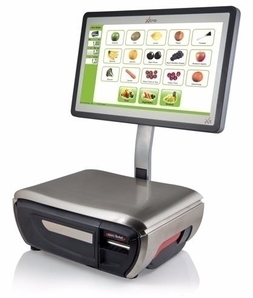 In fact, virtually everywhere (I believe it's because of a law), if you want a plastic shopping bag, you have to ask for one, and pay an extra 10 cents/Euro apiece. Essentially, you tell the checkout clerk beforehand how many bags you need so she can ring them up. And keep in mind, there are no bag boys in Italy. You bag your own groceries, unless you look befuddled and dumbfounded, like most newcomer tourists look--then you might have a nice lady helping you (or she might get very impatient, you never know.) If two of you are shopping, do like I do with Lucas--I load the groceries onto the belt area, he bags them. (Read my article about the trend toward "Zero-Packaging" and "Zero Waste" markets in Europe HERE). There is also another class of supermarket called the Hypermercato or for short Ipermercato (EE-perr-mher-COT-o). These are like the mega stores we have, Super-Walmart, BJs, etc. They are usually in an industrial area or well away from town centers and are as big as anything in the U.S. If you're vacationing in Italy, even for a prolonged stay in one location, you shouldn't ever need to waste your time in one of these--unless you're just curios about how similar or different they are from similar stores at home. I should also address buying and pesatura, or weighing your produce in larger supermercadi. First of all, it's customary (for hygiene reasons) not to touch the produce with your bare hands. For this reason, you will see signs saying something like, "Servitevi - Per motivi d'Igiene Non Toccare La Merce" Self Service - for reasons of hygiene Do Not Touch the merchandise (A good phrase to remember, there are "Non Toccare" signs in other types of shops, too. ) Somewhere near the fruits and veggies you will see plastic gloves. Put one on the hand you intend to use to pick up your selections and use the other hand to hold the bag to put them into. Now, for pesatura: look around for a scale, and place your bag on the the scale. Above the scale there will be a panel with pictures of the fruit and vegetables on sale that day. Press the the corresponding picture button and you'll get a label printed out. Stick it on your bag. Repeat with your other items. One last tip: Now all supermarkets take credit cards. Some only use their own store cards--like some COOP locations. There should be an ATM nearby, so this shouldn't be much of a problem. Besides, to really experience the Italian lifestyle, try to steer clear from supermercati, even though the quality of produce in them is much superior from what is typically found in U.S. supermarkets. My best experiences have been shopping in local Mama e Papa alimentari, with the ultimate experience being the open air markets.
Happy shopping... and don't forget to buy a mesh shopping bag before heading to Italy. --Jerry Finzi If you liked this article, please share it with your friends! Ciao! You can also follow Grand Voyage Italy on: Google+ StumbleUpon Tumblr Copyright 2016 - Jerry Finzi/Grand Voyage Italy - All Rights Reserved
0 Comments
 A treruote packed to the gills. A treruote packed to the gills. Macchina is another word Italians use when referring to their car. Sure, they say auto too, but most people seemed to use the word macchina (MAK-eena). Even in the Godfather, when Michael tells Fabrizio to get the car (just before Apollonia gets blown up), he uses the word macchina. Macchina also means machine. Sure. Makes sense. You have to examine the Italian psyche to figure out why they think of their vehicles as machines. I think of how they drive. With abandon. Seemingly fearless, not afraid to die. They will pass you on a blind curve with a cliff on one side and nothing on the other. They will pass you on a straightaway but wait until there is a car in the opposite oncoming lane so they can pass in between both cars. Towns like Naples or Bari don't have stop lights where you think they'd be, and even when there is a red light, the driver commands his machine to ignore it--and the cross traffic. Is it bravado? Is it too much wine? Perhaps it's just that they trust their car more... their macchina. Think of the expression "a well oiled machine". Consider the Italian race driver who trusts his car more than his wife. Consider the little, treroute (three-wheeler) which is seen hauling everything from grapes to cement to olives to hay to furniture or cases of wine. The slow-poked three wheeler will be seen on unpaved farm paths, the streets of Rome, and even the Autostrada. It might be taking a bride to her wedding, hauling trash or rigged out to sell gelati.
 A Google Earth capture of the teeny concrete parking hanging over the cliff in Amalfi. A Google Earth capture of the teeny concrete parking hanging over the cliff in Amalfi. Then you have the tiny cars... the CinqueCento (Fiat 500), the Pandas, the Puntas, the Smart ForTwo and those one person cycle-cars. Americans buy cars because of the emotional feeling it gives them... cars gives us a persona. Not the Italian driver. He is more practical, seeing his vehicle as a machine--macchina--a tool to get things done. Sometimes la macchina does specific tasks, other times more like a multi-tool or a Swiss Army knife--the treroute again. Small means you can park anywhere--literally--anywhere. Small means you can drive down the white line like a scooter. Small means you'll never get stuck in a ultra-narrow street in a small village. Small means you can have a parking space in your home, even if it's a tiny little platform hanging over the edge of a cliff--or on your roof, or in a small cave (I saw all three types on the Amalfi Coast.) One was a concrete pad hanging over thin air with barely enough space to fit a teeny Fiat Panda with the sea below. Check out the photo on the left. Paul Simon sings, "Cars are cars. All over the world." Not so, Paul. Not so. In Italy they are machines. Tools. Macchine. Even the Pope has his PopeMobile... a very specialized tool. --Jerry Finzi P.S. If you like what you've read, please LIKE us on Facebook and SHARE us with your friends who might also be interested. Grazie! According a study to the University of British Columbia's Department of Psychology, the effects of a morning coffee or espresso as a stimulant to sharpen a worker's concentration and work product won't necessarily work on every worker. The study found that caffeine and other similar stimulants (like amphetamines) don't actually raise motivational levels in the workplace. For employees who are naturally motivated toward their jobs, a morning dose of caffeine might actually have the reverse effect and turn them into slackers. So, if you're normally a productive person, think twice about having a doppio-dose of espresso.
Sometimes, the best rewards come from loving your job... --Jerry Finzi When people picture Venice, aside from the canals, they will inevitably think of the iconic Campanile in St. Marks Piazza. What they don't realize is the tower standing today was a replica... rebuilt after it collapsed in 1902 after suffering centuries of damage from earthquakes, rising water levels and lightning strikes. Its full height of 98 meters of brick and stone collapsed under its own weight into a huge pile of rubble in Piazza San Marco on a July morning... the only casualty, a cat. The same evening, the Venice commune council voted to rebuild--stone by stone--exactly how it looked before the collapse. The work began in 1903 using the stone and brick from the original structure. The newly erected tower was rededicated in April of 1912. An amazing feat. But of course, even back then, the Campanile was one of the jewels of Venice... a premier stop on one's Grand Voyage through Europe. It was a money-maker, so there was no question about it being rebuilt ASAP. Throughout history, historic structures have been cherished, ruined, loved and rebuilt by people who are proud of their own history. I have seen entire towns in Europe that have been rebuilt in historic accuracy even after World Wars. This bond in Italy is a powerful one which connects the everyday citizen to the ancient Romans, Greeks and Etruscans. Today, after the horrific loses in both life and architectural history from the earthquake of two days ago, Italians have to band together and come to a conclusion that the losses of such beautiful and historic treasures such as Amatrice (the "Town of 100 Churches") and other hill towns in the effected area are totally unacceptable. For example, Amatrice was voted one of Italy’s most beautiful towns last year and was cherished for its Cento Chiese (100 churches) filled with frescoes, mosaics and sculptures. Half the facade of the 15th-century church of Sant’Agostino has collapsed, taking with it the beautiful rose window. They should not allow these historic gems to suffer the same fate as other earthquake damaged towns that have come before them.... turning them into de facto ghost towns. After all, many of these, although beautiful in their own right, were fairly poor without the deep pockets of the likes of Venice. But I argue that rebuilding and restoration of these historic structures and villages should be done as a tribute to the souls lost in this tragedy. I have seen the pride on Italians faces all over Italy for the wonderful little hilltowns they live in. Each is unique in some way--and all have enormous beauty. The people whose lives were lost can never be brought back, but Italy should band together and give tribute to them by rebuilding the homes they treasured so much... where they lived, laughed, sang, ate wonderful local food, held their sagre (festivals), raised their children, honored their ancestors and eventually lost their lives to a cruel act of Mother Nature. Here are some photos of what the three hardest towns used to look like--before the quake... Rebuild these towns. No more ghost towns. Honor the memories and lives of all who left their homes this week for all eternity. Never forget. Do not abandon those left behind... --Jerry Finzi Copyright 2016, Jerry Finzi/Grand Voyage Italy - All Rights Reserved  Pescara del Tronto Pescara del Tronto UPDATE--August 25th, 2016: Although Amatrice's 13th century campanile tower is still standing, it's bell was knocked loose and its clock is stuck at 3:39, the time of the quake. Aftershocks have sent stones falling from the tower as late as Thursday--the danger is still very real. Over 250 people died and hundreds more were injured, with many more still trapped in the collapsed buildings. One hotel in Amatrice had over 70 people staying there--the hotel had completely collapsed. Aside from Amatrice, three other towns were also seriously affected... Accumoli, Pescara del Tronto and Arquata del Tronto. There are also dozens of hamlets in the area--small clusters of houses which are usually incorporated into nearby larger communes--that have yet to be reached by rescuers. Aftershocks are still occurring in the affected areas, hampering rescue teams. One CNN reporter was streaming live on Facebook when suddenly the house immediately behind her collapsed. Many residents that survived are telling frightening tales of crawling out of their crumbled homes through dust, rocks and broken furnishings. Many were thrust into the night wearing only pajamas coated with foul smelling dust... replaced with clean clothes by their neighbors other volunteer rescuers. People have "lost everything", including family members, friends and neighbors. Although the elderly have spent nights in emergency tents, others are forced to stay out in the open. The temperatures in this mountainous region tend to get very cold in the evenings. As aerial photography shows, in some towns the more serious damage occurred to historic centers of towns where buildings are from 400 to 600 or more years old. In newer built areas, damage was not as severe. In the past, towns like these struck by severe earthquakes have become ghost towns, with the populations moved to new-built towns near their original location. Italy does not have a successful record of rebuilding after such earthquakes. Their economy can't afford it. Former residents fear rebuilding and moving back to their homes which sit right on top of obviously active geological faults. About 8,300 people who were forced to leave their houses after a deadly earthquake in L'Aquila in 2009 are still living in temporary accommodation. When we visited Italy we passed through several "ghost towns" that have been abandoned after having gone through such quakes. The people still own their properties, and might still spend time there tending their gardens, olive and nut trees, but at night go elsewhere to sleep. This quake was felt in a wide area of central Italy... some in Rome reported being terrified as their hotel rooms shook for as long as 30 seconds. --Jerry Finzi August 24th, 2016 -- "A 6.2-magnitude earthquake hit central Italy on Wednesday and was felt in Rome some 150 km (90 miles) away", the United States Geological Survey and AFP journalists said. The US Geological Survey (USGS) reported that an earthquake occurred 10 kilometres (six miles) southeast of Norcia, 75 km (47 miles) southeast of Perugia and 45 km (28 mi) north of L'Aquila, in an area bordering the Umbria, Lazio, and Marche regions.  photo by Massimo Percossi photo by Massimo Percossi At the time I'm writing this, around 10:30 am, Eastern Time in the U.S., it's been reported by Italian civil protection authorities that 73 people have been killed in the earthquake. Aerial photos of villages in the region show large proportions of hilltop villages have crumbled with many people missing under the rubble. Sadly, the numbers of dead are expected to rise dramatically. In Amatrice, one hard hit town, there were a larger number of people in town preparing for their annual Pasta Amatriciana Festival this coming weekend. Officials fear more injuries and deaths because of the larger than normal number of people in the town at the time. The additional fact that the quake hit during the middle of the night makes matters even worse. 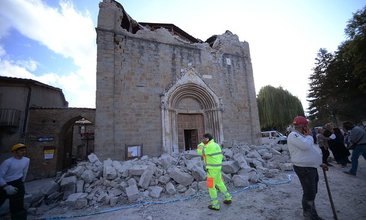 Sant’Agostino Church in Amatrice was badly damaged Sant’Agostino Church in Amatrice was badly damaged Amatrice's mayor, Sergio Perozzi was heard on RAI radio saying, "The roads in and out of town are cut off. Half the town is gone. There are people under the rubble... There's been a landslide and a bridge might collapse." He then added, “The town isn’t here anymore.” Italy's Civil Protection agency described the earthquake as "severe". Teams from the Italian state police have come into the affected area to prevent looting. Earlier Italy’s forestry police told AP that they had extracted dozens of people alive from the rubble in the town of Pescara del Tronto. News footage from the hill town showed rescue workers being winched from a helicopter. But there have also been reports of scores dead in the towns of Accumoli and Pescara del Tronto. We can only hope and pray that our Italian cousins get through this natural disaster... with the help of all of us, I believe they can and will... Click the photo below to donate to the Italian Red Cross. --Jerry Finzi To donate to the Croce Rossa Italiana in dollars and English, go HERE. When we Voyaged around Italy, we kept seeing men in the piazza or in their storefront clubs playing cards. The cards were very fancy looking, something like French cards I saw years ago. But what is this game that gets the men so absorbed they rarely look away from the game? When it seems sudden passions arise and they forcefully slap cards on the table--with a kind of macho panache. We saw it played in the north, down in Basilicata, in Molfetta and most small towns. I discovered they were most likely playing one of the two most popular Italian card games: Briscola (literally, Trump) or Scopa (broom, or Scopare--to sweep). The cards are very beautiful and interesting. A deck of Italian cards consists of forty cards, divided into four suits: coins (Denari, often looking like sunbursts), swords (Spade), cups (Coppe) and clubs (Bastoni--not the same as our clubs. Theirs are actual clubs or bats.) The number value of the cards range from one through seven (not up to ten like our cards). There are also "picture cards" in each suit: Knave (Fante), Knight (Cavallo), and King (Re). The Knave is man standing. The Knight always has a horse somewhere. The King wears a crown. Count the symbols for the number value of the cards. The Ace (Asso) of Coins is a bird with circle in the middle, and other Aces always have one of their symbol.  BRISCOLA Briscola is also played in Croatia, Libya, Spain and Portugal, Malta, Slovenia. and even Puerto Rico, its poularity more than likely spread by sailors who played the game in various ports and aboard ship. It is played by two to six players played with a standard Italian 40-card deck. The game is said to originate from an older Dutch game, evidenced by the word cappotto yelled when one team wins--very similar to the Dutch word "Kaput" meaning to be defeated (though capotto means jacket in Italian). Basically this is a trump following game, although the rules allow the trump to be suddenly changed by players, making it a bit more unpredictable. The four and six player versions of the game are played as a partnership game of two teams. Each card has its own point value-- Ace 11, Three 3, King 10, Knight 4, Jack 3. A deck has 120 points total. To win a game, a player or team must get more points than any other player. Game Play After the deck is shuffled, each player is dealt three cards. The next card is placed face up on the playing surface, and the remaining deck is placed face down, sometimes covering half of the up-turned card. This card is the Briscola, and represents the trump suit for the game. Before the game begins if a player has the deuce of trump he may retire the briscola. This move may only be done at the beginning of the game or first hand. Before the first hand is played (in four player game), team players may show each other their cards. Dealing out cards and the players turns go in a counter-clockwise direction. The player to the right of the dealer leads the first hand (trucco) by laying one card face up. Each player subsequently plays a card in turn, until all players have played one card. The winner of that hand is: if any briscola (trump) has been played, the player who played the highest valued trump wins; or if no briscole (trumps) have been played, the player who played the highest card of the lead suit wins. Players are not required to follow suit, that is, to play the same suit as the lead player. The winner of a trucco collects the cards he just won and places them face down in front of him. Each player maintains his/her own pile. Then each player draws a card from the remaining deck to replace the one previously played, starting with the player who won the trick, proceeding counter-clockwise. The last card collected in the game should be turned up and become the new Briscola (trump). The player who won the trucco plays the first can. During the game and only before the next to the last hand is played, a player who draws the card with the seven (7) of trump can take the briscola. This may be done only if the player has won a hand. Before the last hand, people in the same team can look at each other's cards. After all cards have been played, players calculate the total point value of cards in their own piles. For multi-player games, partners combine their points. SCOPA Scopa is the other popular card game played in Italy. Scopa in Italian means broom, and the game is one when a player sweeps all the cards from the table. It is an easy game to learn but difficult to become really good at it. It's a game of both skill and luck. Again, this is an excitable game, with body language, hand gestures and a bit of cursing being the norm during play. It is also played with the 40-card deck of cards, either with 2 players or partnerships from 4 to 6 players. Members of the same team sit opposite each other. Only one player deals the cards and hands out 3 cards to each player, and then deals four cards face up on the table in front of him. A table card may be dealt before the deal begins, immediately after dealing a card to one player, but before dealing to the next player, or after dealing all players all three cards. The first player (going counter-clockwise again) decides from one of two options: place a card on the table, or play a card to capture one or more cards. A capture is made by matching a card in the player's hand to a card of the same value on the table, or if that is not possible, by matching a card in the player's hand to the sum of the values of two or more cards on the table. The card from the player's hand and captured cards are then placed face down player and considered out of play. If the player captures all cards, this is called a scopa, with additional points awarded at the end hand. After the players have played all three cards, three new cards are dealt to each player, with the new play starting with the player on the dealers right side. That player then begins play again. No additional cards are dealt to the table. This hands are repeated until no more cards remain. In the last hand, the player who most recently captured is awarded any remaining cards, and points are calculated for each player or team. When calculating scores, each scopa (sweep) nets one point. Then a player or team gets one point if he took the highest total number of cards, the highest number of Coin suit cards, the seven of Coins (called the settebello). Calculating the primiera (prime), is also usual. To award the primiera, each cards is given a value. You sum up the points for each card and the highest total is the primiera. The primiera is worth one point towards the total score. There are many variants to the traditional game of scopa, just like in poker. One of the most popular is the Asso piglia tutto (ace wins it all). The player that plays an ace can take all the cards on the table. This can count as a sweep or not, according to the variant in use. The next time you see men playing on their little table in the piazza, stand for a while and watch. See if you follow the play. Just don't make any side bets... Buy Italian Playing Cards on Amazon... click the photo above. --Jerry Finzi If you enjoyed this post, please share it on your favorite social media site. Grazie! Last year, we went to the Hoboken Italian Festival and enjoyed the waterfront views, the food and the nostalgia. I thought I would post this story again because the 2016 Festa is coming up again... Festival Dates for 2016: September 8th – 11th The 800 pound statue of the Madonna dei Martiri procession runs through the streets of Hoboken on Saturday, September 10th. As you read my article, you'll discover that there's more than the Festival itself to make the trip worth it...  This is what the Sagre used to look like This is what the Sagre used to look like --September, 2015 My Mom and Dad both grew up in Hoboken, with many other Italian immigrants, many families (like my Dad's) were from Molfetta. In Molfetta in early September they have a feast to honor the Madonna dei Martiri (Madonna of the Martyrs). When I was a boy I went to the "feast" (as we called it) many times with my Parents, Uncles, Aunts and Grandmother... there was a grand procession, where young and old men would carry the hefty statue of the Madonna through the streets. There was usually a raised stage set up on a corner with Italian singers, dancers, and even dramatic short plays from the old country. Then there was the food. You name it and it was there. All manner of Italian delicacies... spaghetti dinners on long tables set up at curbside, meatball or sausage and pepper sandwiches, deep fried calamari, zeppole, pastries and much more.  Most of the old Italians have passed on and their children have moved away from Hoboken during its years of gentrification and revitalization. When I was a kid, Hoboken had some very iffy neighborhoods and some decent ones. It's a small town-only one mile square--but has a lot going for it, especially nowadays--if you can afford to live there, that is. You see, Hoboken has become essentially an upscale neighborhood linked so tightly to Manhattan that you almost don't notice the mile and a half wide Hudson river flowing between them. Of course, in the old days the town's fame came from it's most popular and well known product--Frank Sinatra. My Mom went to grade school with him (and said that all the girls didn't "go" for him because he was so skinny). There is a wonderful waterfront park and promenade named after old Blue Eyes--Sinatra Park, which is where the Italian Festival is held. Nowdays, he has been replaced with the newcomer, Buddy Valastro, of Carlo's Bakery and TV's Cake Boss fame. But Hoboken has a lot more going for it than its Italian heritage, Sinatra or Buddy's overpriced fondant covered cakes. We rediscovered it's charm and beauty while going to the Italian Festival last weekend. But, there is both good news and bad what we discovered there...  First of all, we tried to park. Most free parking spaces are taken up by residents with parking permits on their windshields. There are also lots of those new style computer parking kiosks--if you can find an empty parking space at all. Hoboken always had a problem with parking--when I was young, dodging double parked cars on its narrow city streets was something you just had to put up with. Not much has changed today. In fact, we couldn't find a spot so decided to park in a newer indoor garage in one of the many newer apartment buildings that line the east side of town... for $30! That's Manhattan prices, alright. Then there was the festival itself. We went down to Sinatra Park to where the food concessions were. There were the prerequisite offerings of sausage and pepper sandwiches, zeppoles, pizza, and a Cake Boss tent with a nearly sold out batch of cannoli, but there was also Greek souvlaki, Mexican food, the "MozzaRepas" corn cakes, Argentinian meats and zeppoles made by a nice, but very un-Italian, Ecuadoran lady. There was a Spanish guy that had a wood fired oven on a trailer rig so we got one, but it was very bland--nice crust, but no spices in the sauce. The sausage and pepper sandwich was just not authentic. The Italian pastries in another tent looked like they were purchased at a supermarket. And even though the procession carrying the statue was supposed to be down near this area while we were there, we never saw it. Perhaps it got tied up in the awful Hoboken traffic. The only music was some old guy singing lame versions of Sinatra songs to pre-recorded MIDI Karioke tracks. Lordy... where's the mozzarella to stuff my ears?! Ok, so the old style Italian Festival is virtually dead and gone. It's a lot different from the Festa of the Madonna dei Martiri when I was a kid. After all, when you look at the faces in this town all you rarely see one under 30 years old. I wonder how they can afford to live in Hoboken.  It used to point straight down to the seedy bar, now it points around the corner to the fancy new place It used to point straight down to the seedy bar, now it points around the corner to the fancy new place But now the good. If you want to visit Manhattan, don't go there, go to Hoboken. This town has evolved into the liveliness of the way Greenwich Village was in the Sixties. There are bars, clubs, restaurants of every cuisine you can imagine, chic shops, cool gritty shops, specialty food shops, coffee, cheese, even hand made cigars. This place is cool--if you're under 40, that is. And that's not the only thing. When I was a boy, my Dad would take me down to the Hoboken waterfront to tell me about his history. He and his brother Peewee had a "three legged horse" (merely lame) they used to sell fruit and veggies to the sailors coming from the many large ships that docked along the waterfront piers. There were many bars in Hoboken (every other storefront, as he tells it) and houses of ill repute. This was a rough, tough and seedy seaport town. The famous Clam Broth House served raw bars in just as raw an atmosphere with clam shells tossed onto the tiled floor into the sawdust. (Now it's moved around the corner and is a fine dining establishment). Whenever my Dad took me in there I couldn't stand the smell of beer and iffy clams. Sinatra's mother, Dolly (as my Mom told it) performed abortions in the back room of the family's bar. Dolly became politically active because of her inside "connections" to all the local political bosses. This was--and still is--a very "connected" and perhaps corrupt town, but the fruits of these politicians and developers have left something positive: The new waterfront. This is the gold that Hoboken offers to visitors. The revived waterfront is every bit as good as the promenade down in Battery Park City--but with obviously better views looking back on the Manhattan skyline. From a single viewpoint, you can see the towers clustered in midtown and the newer towers clustered around the Freedom Tower down at the tip of the island. You can see all the way north to the George Washington Bridge. The river is alive again with lots of boat traffic and ferries going into many stops around Manhattan. And the best thing is the way they developed the waterfront itself. Paved paths, green spaces, trees and even a curved walkway that leads you from the shore onto a man made island park complete with a playground for the little ones.  The best view of the Big Apple The best view of the Big Apple The best part of our little sojourn was sitting on a bench, cooling off with some Mr. Softee ice cream cones, listening to a really good street singer right at the water's edge, and soaking in that amazing view of our old home--Manhattan Island. Lisa grew up in lower Manhattan and I lived and worked in my studio there for 38 years. Having done a lot of boating around these waterways, I loved seeing New York from river level once again. We also had a chance to walk over to Carlo's Bakery (our second time there) thinking we'd pick up some pastries and see how their new renovation looked. Though over a block long like the first time we went there a year or more ago, the line inside was still long. We took a ticket. We were #77 and they were "Now Serving 44". Yikes. A quick calculation of 33 people at 4 minutes average apiece meant we'd be waiting over an hour and a half to be served. They only had 3 people behind the counter! So at best, 30 minutes to wait? To be honest, the last time we got cake from Carlo's we didn't think it was all that great... you see I grew up in Hudson County and have had Italian pastry and cakes from many great bakers in the area. Carlo's ranks 2.5 on a scale of 5 to me. So we left. Sorry, Buddy. One more little detour was to take Lisa and Lucas down a few blocks to the old Erie Lackawanna Railroad Station--and old world gem, sort of a smaller version of Grand Central Station in Manhattan. It was beautiful, and is still a functioning train station. You can see its beauty in various films, like the train station scene in Julie & Julia (2009). Lucas noticed the fancy staircase right away and said it reminded him of that scene in the Untouchables when Elliot Ness has a shootout while trying to catch the baby carriage rolling down the stairs. It was like stepping back in time to the 1920s or 30s. So, while the "Feast" was a bust for us, the day was a joy. We had fun, enjoyed the river views, saw a few funny dogs being walked, and filled our bellies with a sack of Guatemalan zeppoli on the ride home... Not bad, but why the holes in the middle? --Jerry Finzi If you enjoyed this post, please tell your friends about Grand Voyage Italy... and keep coming back. Ciao! The contents of this article are copyrighted material. Copyright 2015, Jerry Finzi - All rights reserved
We planned on going to Italy even before our son, Lucas was born, but because of a sudden illness, we had to call it off. Then in 2014, we planned our three week Voyage to Italy, but this time, with our 12 year old son along with some typical goals... see the art, architecture, learn the history and search out my father's roots in Molfetta down in Puglia. We knew it would be a great time, giving us fantastic memories, but as this blog shows, it has changed our lives in many ways. Here are a few ways that a Voyage to Italy might change you forever:
--Jerry Finzi If you liked this article, please share it with your friends! Ciao! You can also follow Grand Voyage Italy on: Google+ StumbleUpon Tumblr Copyright 2016 - Jerry Finzi/Grand Voyage Italy - All Rights Reserved
 About 20 miles northeast of Verona, and 10 miles west of Lake Garda, the Voyager will discover the Santuario Madonna della Corona clinging to its precarious perch on Monte Baldo. Medieval documents tell us that around the 11th century, hermit monks from nearby Abbey di St Zeno in Verona lived on the mountain. In the 13th century, a monastery and chapel were dedicated to St Mary of Montebaldo. The Sanctuary of the Madonna of Corona dates from 1522, although some put the date 200 years earlier. Many trek up to the Sanctuary beginning at the small village of Brentino in the valley below, starting off on the Via Santuario, a long path and stairway carved out of the mountain. The trek rises 1800 feet with over 1500 steps to climb. There are those that still climb this as a pilgrimage but make no mistake, this is a rugged mountain path suited for the very fit. If you decide to visit and make the climb up to the Sanctuary, it will take you 2 hours up and another hour and a half coming back down. For the less able, the Sanctuary is also accessible by a paved road from the village of Spiazzi on top of the mountain. The road is accessible by foot and enters the site through a tunnel dug into the rock in 1922.
Here are just two of the 12 varieties of heirloom tomatoes my son, Lucas and I grew this year. This is a large platter to give some size relationship.
The globe shaped tomatoes are Giant Belgium and range from 2" to 4" in diameter. I've been growing Belgium for about 20 years... seed-saving every year. This year, I went for volume rather than size, so I didn't remove any tomato "babies" (which would allow the remaining tomatoes to grow much larger). In years when I've gone for size and left only a third of the tomato pips on the vine, Belgium produced 1-2 pound fruits. The other tomato is a fairly new favorite of mine--Jersey Devil. I've been growing it for the last 4 years or so. It is a horn, pepper shaped tomato with a sweet flavor which can be used for both sauces and slicing. This year, they have grown up to 6" long. I will say that this year I've had a terrible problem with blight and am considering solarizing my tomato beds to kill the fungus. I started with 3 raised beds and last year put in 3 more smaller beds, and sadly discovered the blight is in most of my beds. Rotating my crops every three years used to keep disease at bay, but I now have to try something radical. Either solarize the beds (covering with clear plastic, which heats and kills organisms) for the entire next year's growing season, or completely relocate my veggie garden to somewhere else on our property. The choices for new location is limited because we've planted many varieties of trees during our 17 years on our property, giving us both privacy and our own private arboretum. There are only three areas left with enough sun for a productive vegetable garden. Wish me luck! --Jerry Finzi |
Categories
All
Archive
June 2024
|










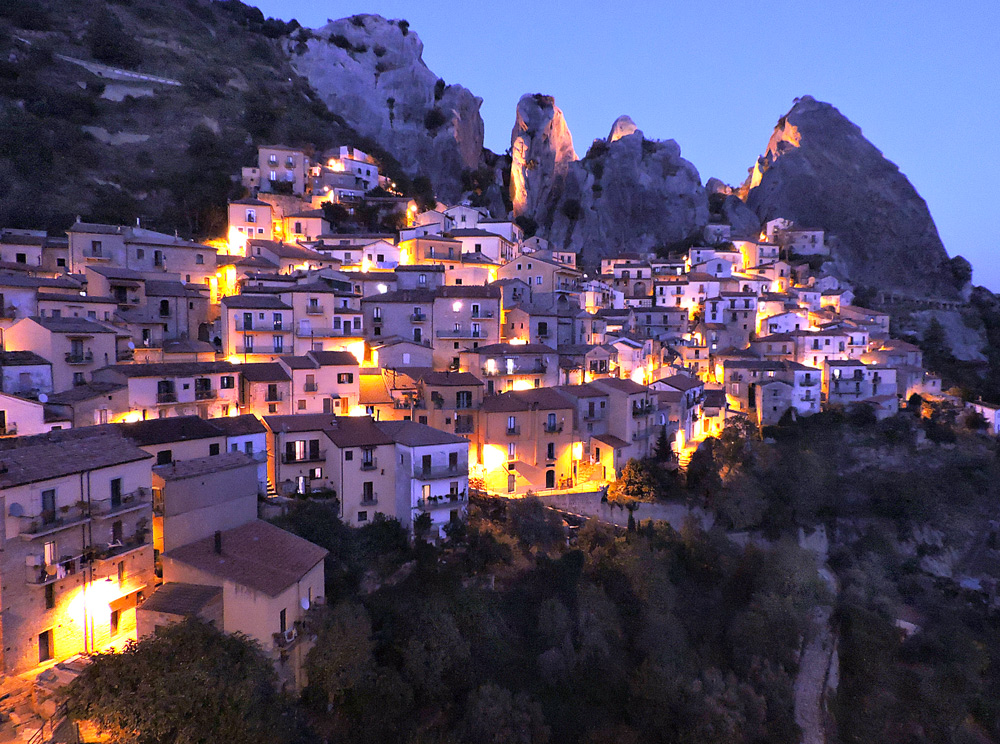


















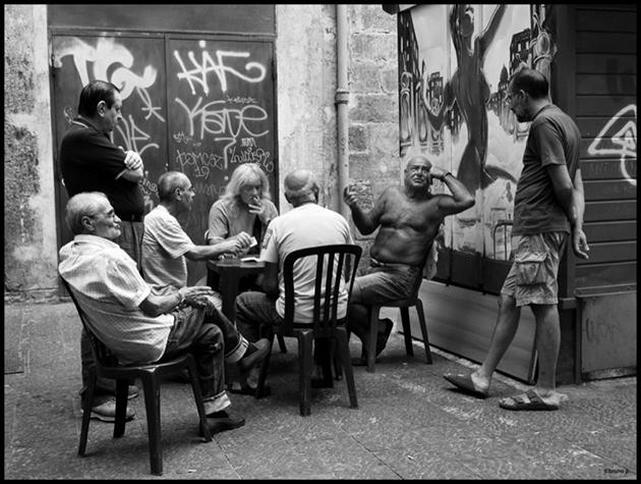


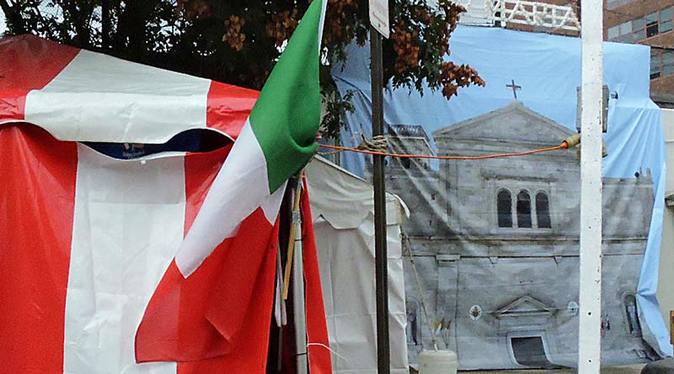




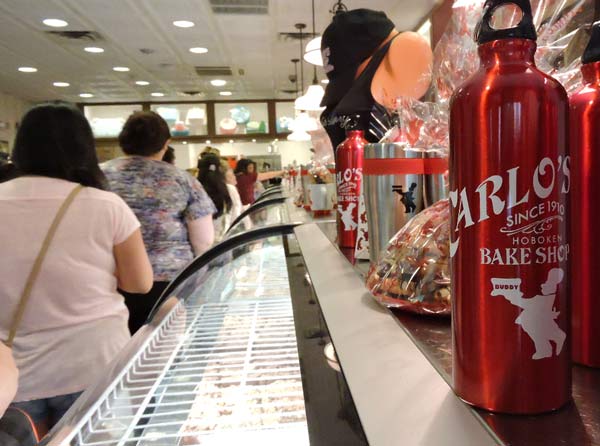





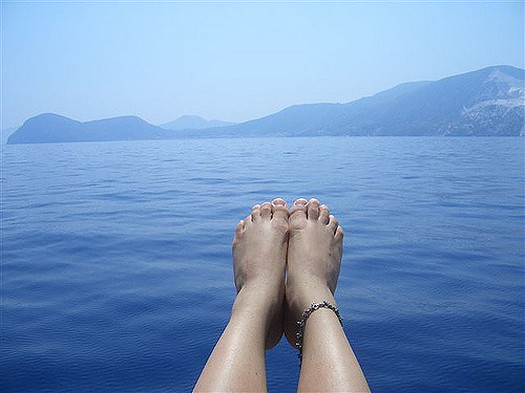




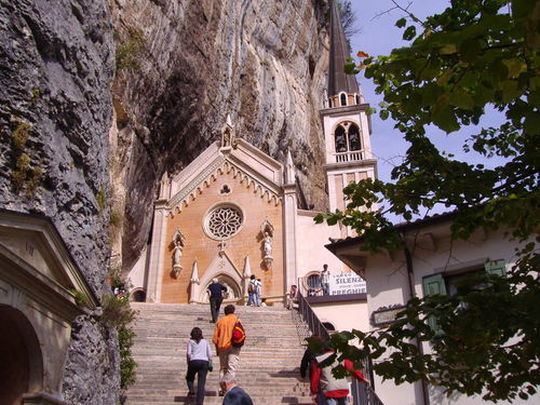






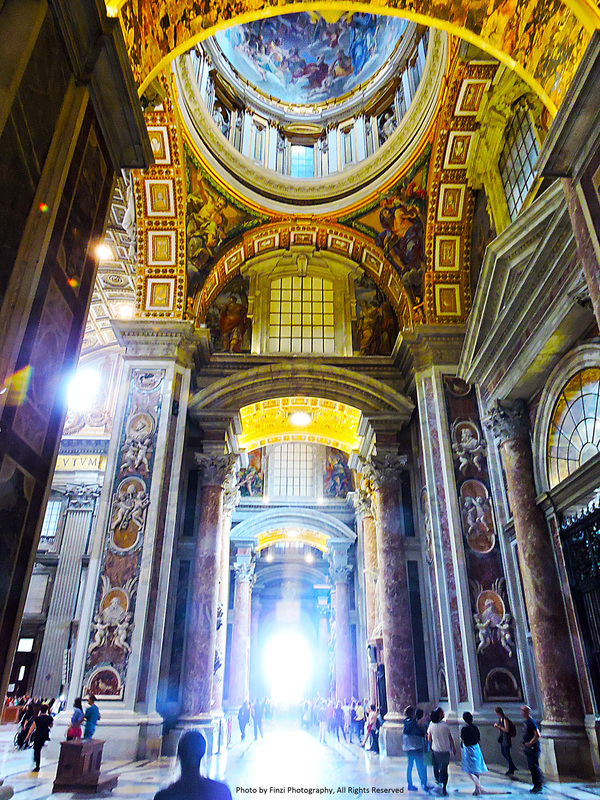
 RSS Feed
RSS Feed
